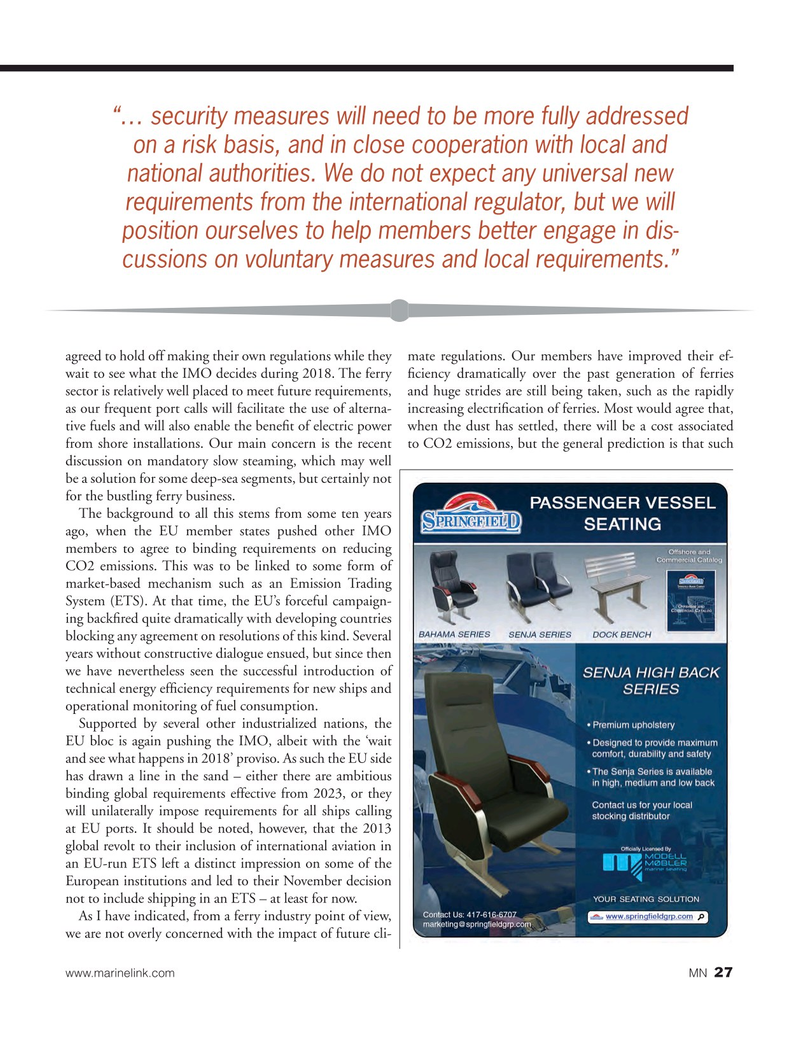
Page 27: of Marine News Magazine (January 2018)
Passenger Vessels & Ferries
Read this page in Pdf, Flash or Html5 edition of January 2018 Marine News Magazine
“… security measures will need to be more fully addressed on a risk basis, and in close cooperation with local and national authorities. We do not expect any universal new requirements from the international regulator, but we will position ourselves to help members better engage in dis- cussions on voluntary measures and local requirements.” agreed to hold off making their own regulations while they mate regulations. Our members have improved their ef- wait to see what the IMO decides during 2018. The ferry ? ciency dramatically over the past generation of ferries sector is relatively well placed to meet future requirements, and huge strides are still being taken, such as the rapidly as our frequent port calls will facilitate the use of alterna- increasing electri? cation of ferries. Most would agree that, tive fuels and will also enable the bene? t of electric power when the dust has settled, there will be a cost associated from shore installations. Our main concern is the recent to CO2 emissions, but the general prediction is that such discussion on mandatory slow steaming, which may well be a solution for some deep-sea segments, but certainly not for the bustling ferry business.
The background to all this stems from some ten years ago, when the EU member states pushed other IMO members to agree to binding requirements on reducing
CO2 emissions. This was to be linked to some form of market-based mechanism such as an Emission Trading
System (ETS). At that time, the EU’s forceful campaign- ing back? red quite dramatically with developing countries blocking any agreement on resolutions of this kind. Several years without constructive dialogue ensued, but since then we have nevertheless seen the successful introduction of technical energy ef? ciency requirements for new ships and operational monitoring of fuel consumption.
Supported by several other industrialized nations, the
EU bloc is again pushing the IMO, albeit with the ‘wait and see what happens in 2018’ proviso. As such the EU side has drawn a line in the sand – either there are ambitious binding global requirements effective from 2023, or they will unilaterally impose requirements for all ships calling at EU ports. It should be noted, however, that the 2013 global revolt to their inclusion of international aviation in an EU-run ETS left a distinct impression on some of the
European institutions and led to their November decision not to include shipping in an ETS – at least for now.
As I have indicated, from a ferry industry point of view, we are not overly concerned with the impact of future cli- www.marinelink.com MN 27

 26
26

 28
28
